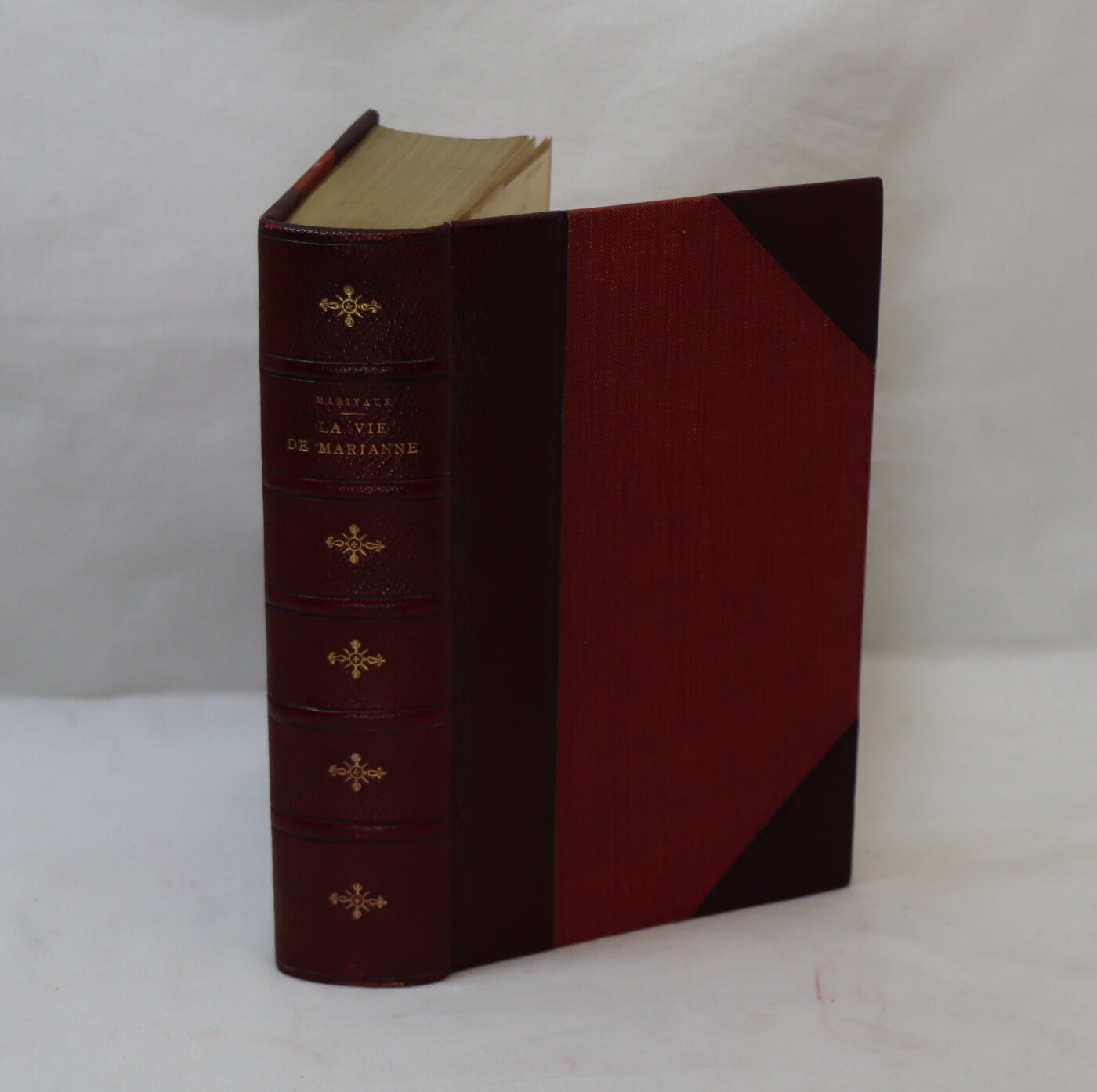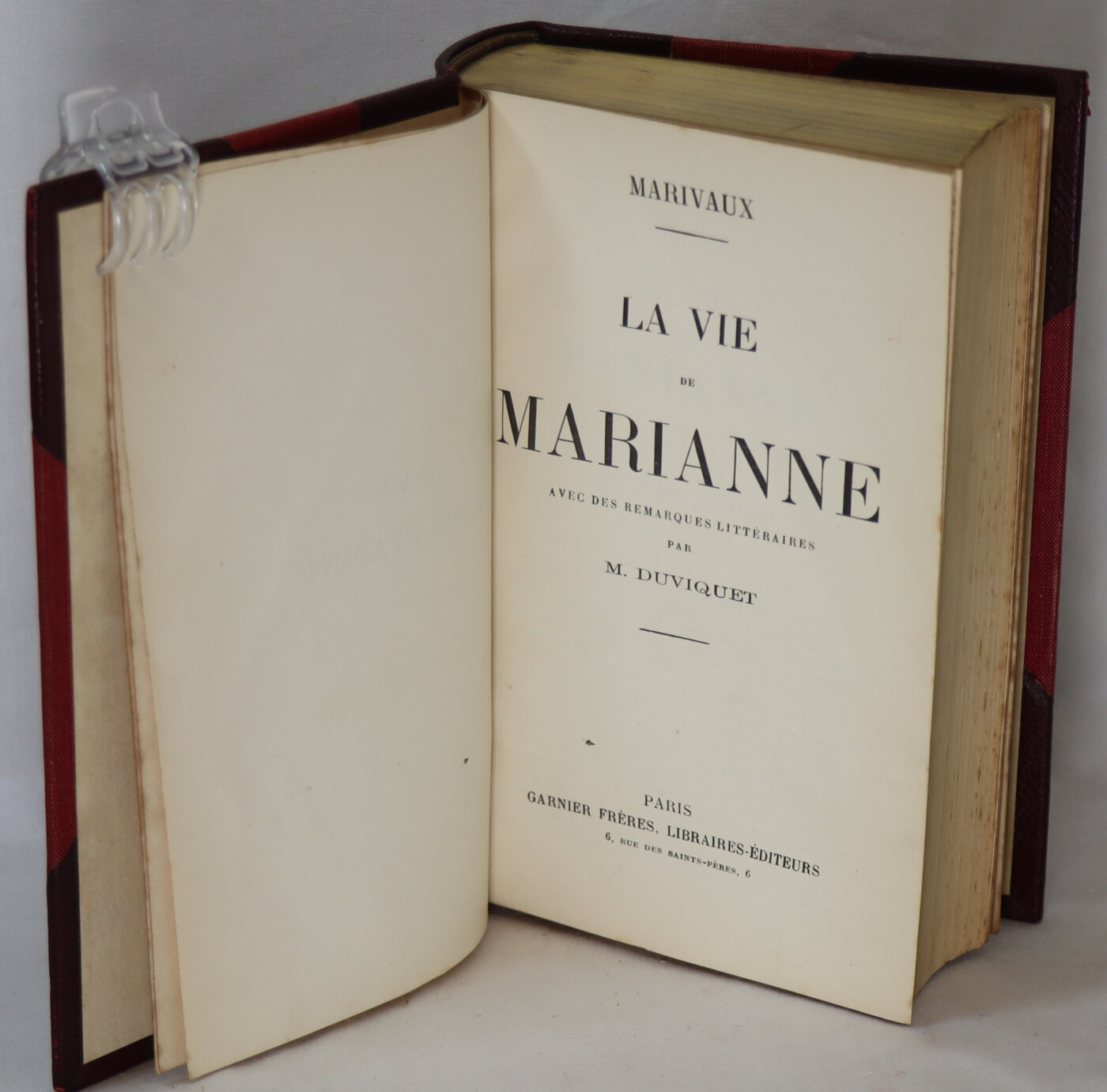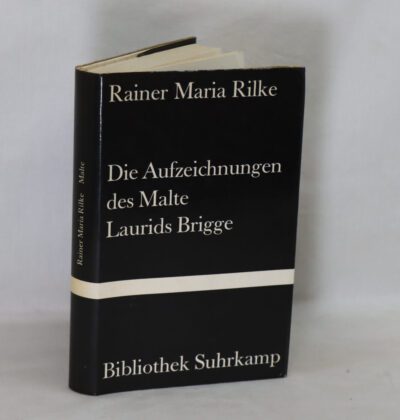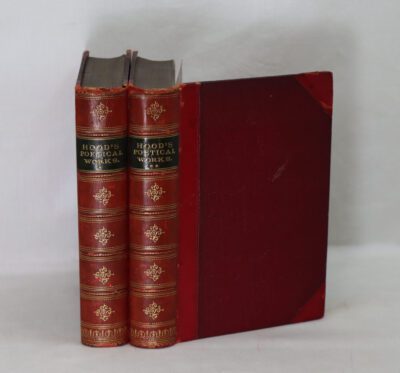La Vie de Marianne.
By Pierre de Marivaux.
Printed: Circa 1890
Publisher: Garnier Freres. Paris
| Dimensions | 13 × 19 × 4 cm |
|---|---|
| Language |
Language: French
Size (cminches): 13 x 19 x 4
Condition: Very good (See explanation of ratings)
Your items
Item information
Description
Maroon calf with raised banding and gilt title and decoration on the spine.Maroon cloth boards.
-
We provide an in-depth photographic presentation of this item to stimulate your feeling and touch. More traditional book descriptions are immediately available
-
Note: This book carries a £5.00 discount to those that subscribe to the F.B.A. mailing list
A lovely, well tailored book in an almost new condition. Please view the enclosed photographs.
La Vie de Marianne (The life of Marianne: or, the adventures of the Countess of ***) is an unfinished novel by Pierre de Marivaux and illustrated by Jakob van der Schley.
The novel was written in sections, eleven of which appeared between 1731 and 1745. A Continuation was produced by Madame Riccoboni, but this too is incomplete.
The success of La Vie de Marianne owes much to the perfect alignment between the author, his era, the characters, and the readers. In this work, Marvaux displayed a level of insight and eloquence that surpassed many, skillfully depicting the subject with rich details that closely adhere to reality. The narrative, with its intricate twists, seamlessly weaves through numerous incidents, intricately connected to the plot, enhancing its appeal while delaying the resolution. Marivaux effortlessly portrays characters that not only resemble specific individuals but also capture the essence of people in general, particularly those of his time.
La Vie de Marianne resonated with its contemporaries, who enjoyed following the journey of a young orphan from humble beginnings, facing challenging trials before achieving recognition and fortune, even if the specifics remain unknown due to the unfinished nature of the novel.
Marivaux effectively utilized the novel genre to paint a vivid and never monotonous picture of the diverse 18th-century world. In a novel innovation, intellect breathes life into the narrative alongside passion, interwoven with insightful reflections seamlessly integrated into the action. Representations, reflections, and anecdotes charmingly intertwine, enhancing each other. Characters are meticulously studied, granting them tangible life.
The author’s complete withdrawal from the narrative, allowing Marianne to speak directly, enhances the illusion and undoubtedly sustains it in the reader’s mind. Marianne feels so authentic that it’s challenging for the reader not to believe they are reading an account from someone who genuinely played a pivotal role in the recounted adventures.
The characters are well-defined, firm, and supported. Marivaux crafts his heroine as an epitome of premature reason, intelligence, distinction, and beauty. The mystery surrounding her birth adds credibility to the attributes attributed to her, intensifying the interest she evokes. Marianne embodies a mix of frankness, pride, and reason, infused with a hint of coquetry that feels natural and effortless.
La Vie de Marianne exhibits artistry, with the first-person narrative proving an excellent choice for a woman of the world to share her confidences as she reflects on the passage of time. When recounting her youthful impressions, Marianne exudes the aura of a great lady. Though the years may have tempered Marianne’s vivacity, now a countess, and introduced a touch of detachment from the habit of happiness into her expression, the remarks, reflections, and sentiment analyses she weaves into her story would seem to cool passion if the reader imagined they came from the pen of a naive observer.
The twelfth part of La Vie de Marianne was entirely written by Marie-Jeanne Riccoboni. In her time, she received praise for adeptly adopting Marivaux’s style, yet this impression of fidelity to the original did not endure into the modern age.
Pierre Carlet de Chamblain de Marivaux (4 February 1688 – 12 February 1763), commonly referred to as Marivaux, was a French playwright and novelist. He is considered one of the most important French playwrights of the 18th century, writing numerous comedies for the Comédie-Française and the Comédie-Italienne of Paris. His most important works are Le Triomphe de l’amour, Le Jeu de l’amour et du hasard and Les Fausses Confidences. He also published a number of essays and two important but unfinished novels, La Vie de Marianne and Le Paysan parvenu.
Want to know more about this item?

Related products
Share this Page with a friend












